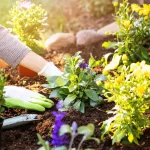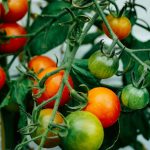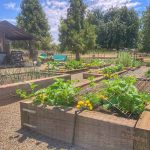Wondering about the planting guide for Alabama? You’re not alone! Alabama’s unique climate and soil conditions require specific considerations for successful gardening. That’s why we’ve put together this comprehensive planting guide to help you make the right decisions for your Alabama garden. Editor’s Note: This planting guide for Alabama has been published on [today’s date] • Read More »
Archives: planting
Ultimate Planting Guide for Zone 7a: Your Path to a Thriving Garden
June 5, 2024 | By fkdtsoreang@gmail.com | No Comments | Filed in: garden classes.Confused about what to plant in your zone 7a garden? You’re not alone! That’s why we’ve put together this comprehensive planting guide to help you make the right decision. Editor’s Note: This planting guide for zone 7a has been updated for the current year and includes the latest information on what to plant in your • Read More »
Discover Your Ultimate Guide: The Garden Planting Calendar for Flourishing Gardens
June 5, 2024 | By fkdtsoreang@gmail.com | No Comments | Filed in: garden classes.Are you passionate about gardening and eager to plan your next planting season? Look no further than a comprehensive garden planting calendar, your ultimate companion for a thriving garden. Editor’s Note: Our recently published garden planting calendar, updated on [date], is an indispensable resource for gardeners of all levels. It provides tailored planting schedules for • Read More »
The Ultimate Guide to Planting Tomatoes for Abundant Garden Harvests
June 5, 2024 | By fkdtsoreang@gmail.com | No Comments | Filed in: garden classes.Wondering how to plant tomatoes? You’re in luck! Planting tomatoes is a great way to get fresh, homegrown tomatoes all summer long. But before you get started, it’s important to do your research and learn about the best way to plant tomatoes in your specific climate. That’s where this planting guide tomatoes comes in! We’ve • Read More »
The Ultimate Zone 9b Planting Guide: Grow a Thriving Garden
June 4, 2024 | By fkdtsoreang@gmail.com | No Comments | Filed in: garden classes.Expert Planting Guide for Zone 7b: Unlock Your Gardening Potential
June 3, 2024 | By fkdtsoreang@gmail.com | No Comments | Filed in: garden classes.Tired of your plants dying prematurely? Wondering what plants will thrive in your Zone 7b garden? Look no further! Our comprehensive planting guide for zone 7b has everything you need to know to create a beautiful, thriving garden. Editor’s Note: “Planting Guide for Zone 7b” published on [publish date]. This topic is very important to • Read More »
The Ultimate Planting Guide for Zone 8b Gardens
June 3, 2024 | By fkdtsoreang@gmail.com | No Comments | Filed in: garden classes.Wondering what to plant in your Zone 8b garden? We’ve got the answers! Our comprehensive planting guide will help you choose the right plants for your climate and soil conditions. Editor’s Note: Our planting guide for zone 8b is now available! This guide is essential reading for any gardener in this climate zone. We’ve done • Read More »




